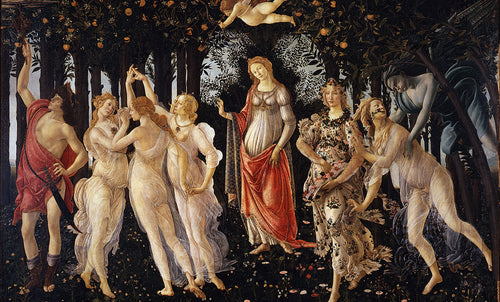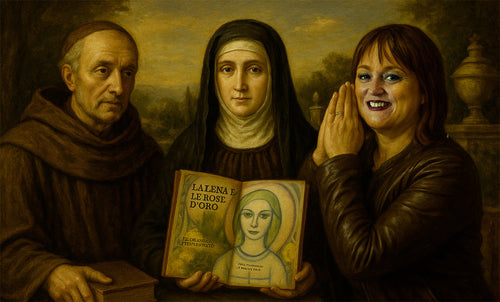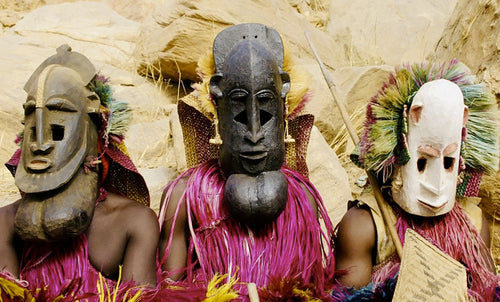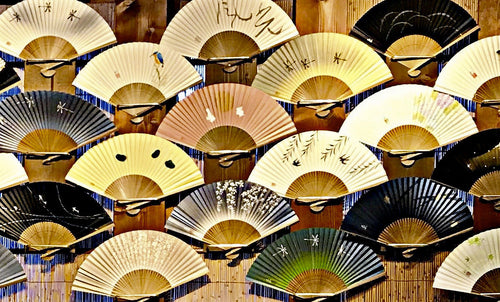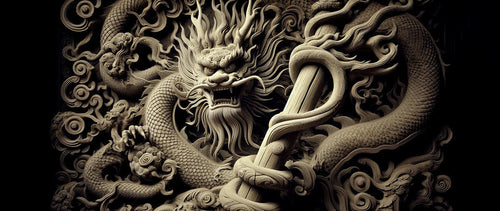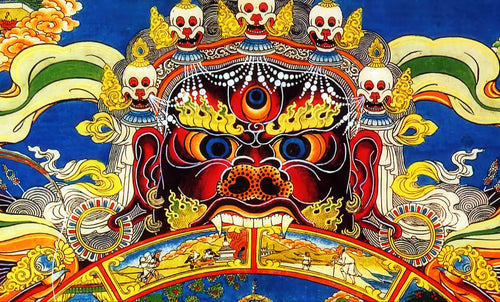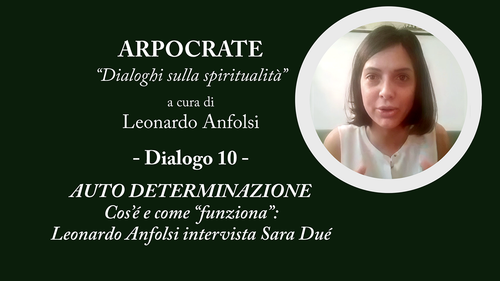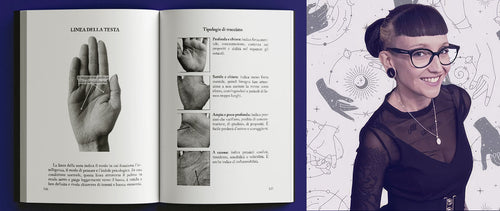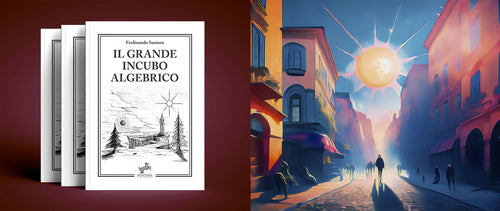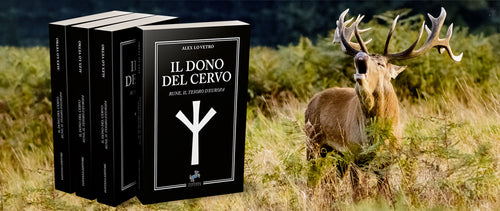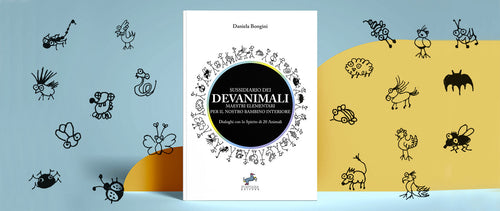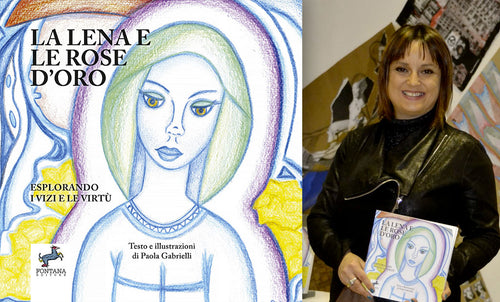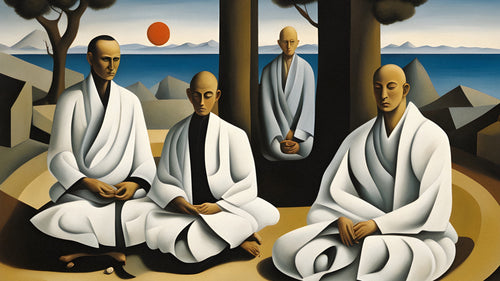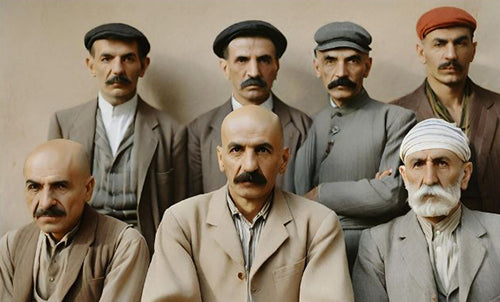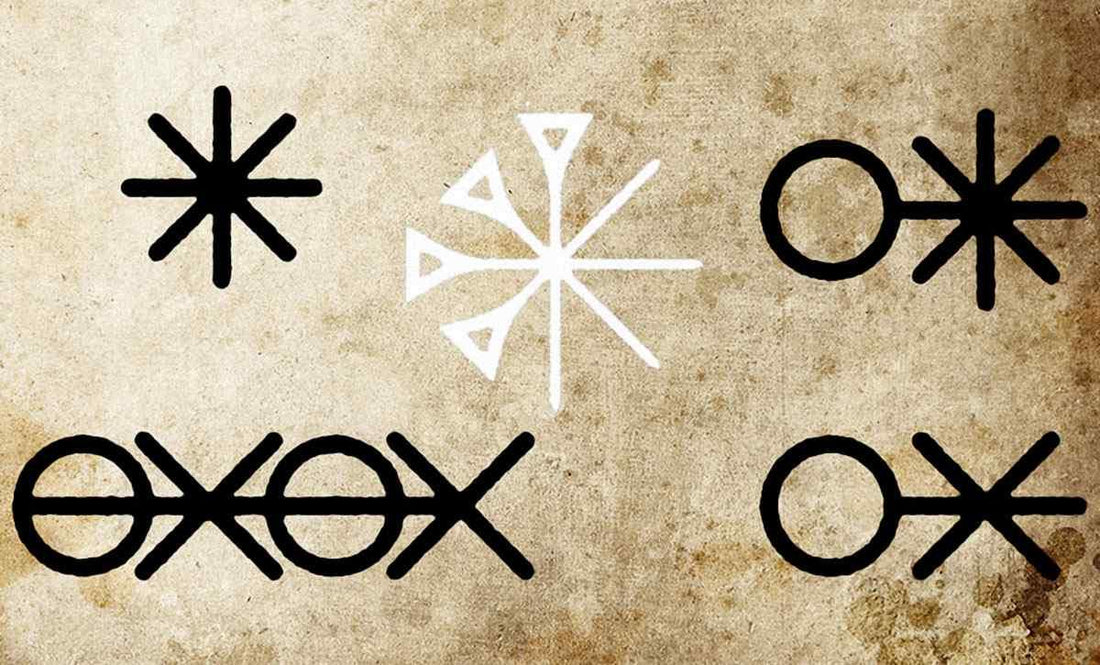
Nushadir. The salt of Ammon or Amun: an appropriate practice of Inner Alchemy
Leonardo AnfolsiWhen they break my wings
and prepare me to be bathed in water
- which is my enemy -
I become capable of breaking the metals,
and I break them with violent strenght.
So that a fine mercury is produced
The tartar must be there too
more I cannot give to you
if the Sun and the Moon are not in me.
I find it very interesting that the good Friar Basilio likes to identify himself[1] with the substance of the salt of Ammon or Amun: an appropriate practice of Inner Alchemy.
In fact, the sal armoniac has the power to unite opposing substances, of different quality. It is also not the "King of the salts", that is saltpeter, but its symbol on the philosophical hand is none other but the Sun; however, sal armoniac from solid quickly becomes volatile and carries within itself the metals that have been added.

Apparently its name derives from a temple of the God Amun in Siwa, the most northern of the Egyptian oasis, near the actual border with Libya, that in ancient times was one of the most famous oracle centers of the Mediterranean world, visited by Alexander the Great in 331 BC. In Siwa our primordial substance, known as nushadir, were probably collected by sublimation from burned dung.
They collect dung during the first four months of the year, when the animals feed on the spring grass. So the dung of black cattle, horses, sheep, goats, et cetera, which contains sal armoniac, is dried, and sold to the people as fuel. The soot from this fuel is carefully collected and sold to the sal ammoniac makers, who work only during the months of March and April, the months of Aries and Taurus, for it is only at that season of the year that the dung is fit for their purpose.
Another aspect of nushadir, coming from ancient tale and connected with the quality of moistness, considers the location of the oasis of Siwa that is below sea level, and the presence of many wells and small brackish water lakes; they have peculiar qualities related to the washout of the rocks layers of the area and this would confirm the ancient tales on the surfacing of ammonia, or finding it in the sands, like Pliny said[2], theorizing that it was a fossil salt.[3]
Nonetheless, Alexander the Great was surprised to find the mines of the precious nushadir in Tajikistan.[4]
Much later the Granduke Francesco I de 'Medici, put Jupiter – the bolt and rain dispenser God[5] - at the center of his alchemical/scientific display in the Villa of Pratolino.
During the Ptolemaic dynasty in Egypt, Jupiter, was put together with Hammon and became, Jupiter Ammon; this salt is in in fact somehow related to the one that is concealed in the rain and the dew, that are celestial gifts, like are the rays of the sun.
Ammonium Chloride, NH4C1
The Alchemist Kerkring studied and practiced the teaching of Basilio Valentino[6]; he created a variation of his work with sal armoniac, using the artificial one[7], inventing a specific process through which he revived the substance adding alcohol to create a powerful solvent.
here is the most simple and practical tool for the sublimation of nushadir outdoors. Just calibrate the heating so that the crystals can form on the cover of the pan.

It is also curious that the sal armoniac, Ammonium Chloride, NH4C1, is now used to flavour food, usually added to licorice, candies and vodka. They call it Salmiak or turkish pepper.
“Sal ammoniac[8] as used in medicine possesses only slight influence over the heart and respiration, but it has a specific effect on mucous membranes as the elimination of the drug takes place largely through the lungs, where it aids in loosening bronchial secretions, making it of the utmost value in bronchitis. The inhalation of the fumes of nascent ammonium chloride by filling the room with the gas has been recommended in foetid bronchitis. Though ammonium chloride has certain irritant properties which may disorder the stomach, yet if its mucous membrane be depressed and atonic the drug may improve its condition, and it has been used with success in gastric and intestinal catarrhs of a subacute type and is given half an hour before meals in painful dyspepsia due to hyperacidity. It is also an intestinal and hepatic stimulant and a feeble diuretic and diaphoretic, and has been considered a specific in some forms of neuralgia.”[9]

Just to point out how many names and opinions exist on this salt, Gabriele Falloppio[10], offers another, quite sinister method
To make the Sale Armoniaco/ Armoniac Salt
Extract one pound of human blood, two pounds of common salt, six pounds of clear water, dilute all together, dilute the salt; then distills and sieve it through a felt/filter; put it on the fire bring it to a boil so that all the water is consumed, and use whatever remains: this is ammoniac salt.
Gabriele Falloppio is not the first nor the last to formulate an artificial ammoniac salt. Antonio De Sgobbis, like Le Fevre, talks of one made with urine, common salt and wood soot. Yes, again, soot.

On a warm day of June[11] I collected among volcanic smelly gases/emissions, a peculiar kind of mineral Sal Armoniac, choosing the white one over the yellow one. As a matter of interest, somebody name it Lunar Volcano, Vulcano Lunatico.

Basilio Valentino offers a mixture of salts in a synergic action: saltpetre, the sal ammoniac and grounded obsidian: distill it over a strong fire, possibly heating a steel vial. This menstruum dissolves ⊙ and drags any metal prepared to this purpose and put together to be distilled.
The calcination of a metal is indeed its “perfect" oxidation, in alchemy defined as a return to the previous, original chaos of that matter, a state full of hungry, waiting potentiality.
Desert Roses
When I was a boy, visiting the Tunisian desert, natives explained me that those wonderful sand and crystal structures named desert roses were made by camel and sheep urine with some desert moisture.
The mineralogist opinion about these surprising natural sculptures is that are rose-like crystal group formed by precipitation in desert regions containing trapped sand particles.
Usually gypsum is the host mineral, but baryte, celestine and other minerals can form Desert Rose groups as well. Gypsum is a soft sulfate mineral composed of calcium sulfate dihydrate, with the chemical formula CaSO4·2H2O, it is widely mined substance used as a fertilizer, in many forms of plaster, blackboard chalk and wallboard. Another name for gypsum is alabaster; an interesting substance that Zosimus of Panopolis, our Egyptian ancestor, used as a precious kind of lime with which he made the strongest solvent.
The Sun-embodying Salt
Zosimus was a religious-spiritual man that was considered in the VI century one of the most erudite scientist.
I believe that we should not keep an opinion on what could basically be true or false, but rather to have the pulse of what we - ourselves - understand of the world, in any form it is expressed and beyond any underlying theory; I certainly know that if I can do this, I can also understand things far away from me. To merely conform to the views of our time makes us slaves of an ideology taking away our dynamic, creative ability to understand.
Zosimus, born in Egypt, educated in Greece, and a Roman citizen, was initiated into the Persian-Roman cult of Mithra; he brilliantly commented the prophetic book of Enoch[12]. If we listen to what Zosimus says we can see many things about this salt, and much more.
In this text below, Zosimus quoting an historical chronicle, the Synkellos[13] explains some passages from the Book of Enoch.
“These same scriptures also maintain that from them [sc. the angels] the giants were born. Their initial transmission of these arts came from Chêmes. He called this book the Book of Chêmes, whence the art is called Chêmeia.”[14]
There have been debates, in the past, on the origin of the word alchemy. Today we are sure that it derives from the ancient Egyptian name referring to this ancient land of knowledge as "black earth".
“The idea of “black- earth” has a twofold significance: it points us to the presumed Egyptian origin of the Art, and it represents symbolically one of its chief concepts—prime matter, the black substrate of alchemical transmutation.[12] Adding his own fanciful etymological touch, Zosimus links Chêmeia with a mythical figure named Chêmes, who is evidently one of the gigantic offspring of the fallen angels and their human wives. This giant, he tells us, recorded the revelations of the angels in the Book of Chêmes, in which form they were trans- mitted to the earliest alchemical initiates. In this way, Zosimus appropriates the Enochian story and expands it into an explicit account of the origins of his own sacred art, Chêmeia.”[15]
Cosmogony and theurgy were experienced not only concerning a visionary description of the world, but deriving from the living experience of the erudites of that times, who tried to connect to the coordinates of other worlds and other cultures. So the ideas of people involved in alchemy were not so much “fanciful”, as vibrantly and vividly connected to the strength of the culture and spirituality of the time.
In this case Zosimus, using the word Chemeia is implicitly referring to the nushadir, which can also be regarded as the fertile mysterious component of silt/loam; Indeed through living-electrical-effects, more than scientific fenomena, all the salts of the philosophical hand chase one or another of these kingdoms: the one of metals (the star), the mineral world (the lamp), the sea world (the key), the celestial world (the lunar crown) and in the solar / human / animal world(the sun).[16] No coincidence that the deer’s antlers were once considered a powerful fertilizer, active just by contact.[17]
It appears that what is more earthy but alive, is also at the same time Electric and... Solar. And that even a little bit of earth (dirt!) has a content of "life" that ties it to the most distant galaxy, thanks to these salts that - while varying in the formula - are everywhere the legacy of the ubiquitous divine thunderbolt and the fruitful seed of every transmutation.
Non sine sole iris.[18]
“The Chaldæans and Parthians and Medes and Hebrews call Him Adam, which is means virgin Earth, and blood-red Earth, and fiery Earth, and fleshly Earth.”[19]

Anyway here is the cuneiform pictogram meaning "sun"

and the symbol that stands for the solar salt, sal armoniac or nushadir

Alchemical text by Gabriele Falloppio, Secreti Diversi, Venezia 1664

Nushadir bibliography:
The Jewish Alchemists: A History and Source Book
1. About identifying oneself with the Opus and substance, see Steve Kalec In this issue. Cfr. Mark Stavish, Dennis W. Hauck and Jean Dubois among others.
2. Nat. Phil. Trans., 1760, p. 504.
3. Plinius Nat. Hist. xxxi, p. 39.
4. I wonder if Tajikistan is the same as the Bucharia that has been cited by the chemist Karsten, as the area from which comes the sal ammoniac – nushadir - of mineral origin.
5. The stoic philosopher Cleante wrote that with his lightening Jupiter confirms the world, that is physically made by Neptune as the God of the Oceanic waters. These waters are superior – frequencies – and inferior, that are the physical waters through which the creative salts-informations are send all over. The renaissance princes considered their dominion as a Jupiter blessing but something to bargain with the archetype Neptune/Poseidon and this is the reason why they all put the statue of Neptune in the main square of their capitol cities.
6. The Triumphal Chariot of Antimony commented by Kerkring.
7. Actually we can see that it is very difficult to decide which should be considered the “natural” one. On the contrary we can easily decide which is the working one.
8. Ammonium chloride in British and United States pharmacopoeiae.
9. Volume V24, Page 59 of the 1911 Encyclopedia Britannica.
10. Gabriele Falloppio (1523 – 1562) called Fallopius: anatomist, physician, surgeon, alchemist.
11. No way to collect the volcanic-solar salt after a heavy rain.
12. The Book of Enoch is a sacred Jewish and Christian book, yet not included in the Ancient Testament. It has various versions: Slavonic, Greek (fragments), Syriac and Ethiopian. From the theurgic conceptions contained in this book about angels and humans relations, comes the term “enochian” used by Kelley and Dee in the XVI century.
13. The Synkellos has been written by a Christian clergy from Byzantium, George Syncellus, in the VIII century.
14. Ecloga, 14. 11-14.
15. Zosimos of Panopolis and the Book of Enoch: Alchemy as Forbidden Knowledge, a study by Kyle A. Fraser, associate professor in the Foundation Year and History of Science and Technology Programmes.
16. The last one is the nushadir. For the others, check the treatise of Hollandus: see rexresearch.com and ramsdigital.com.
17. If we truly want to understand these informations, we should first take a real interest in them, then check that they are technically working. Later on, confront them with more established opinions.
18. Iris has in latin the double meaning of rainbow – manifestiation of archetypes and fenomena and… iris, that’s the pure witness that sees everything, that’s to say The pupil; so (IT) is ourself dignified, in absorption beyond time.
19. Zosimus of Panopolis, the Commentary on the Omega Letter, the Libraries of the Ptolemies.






